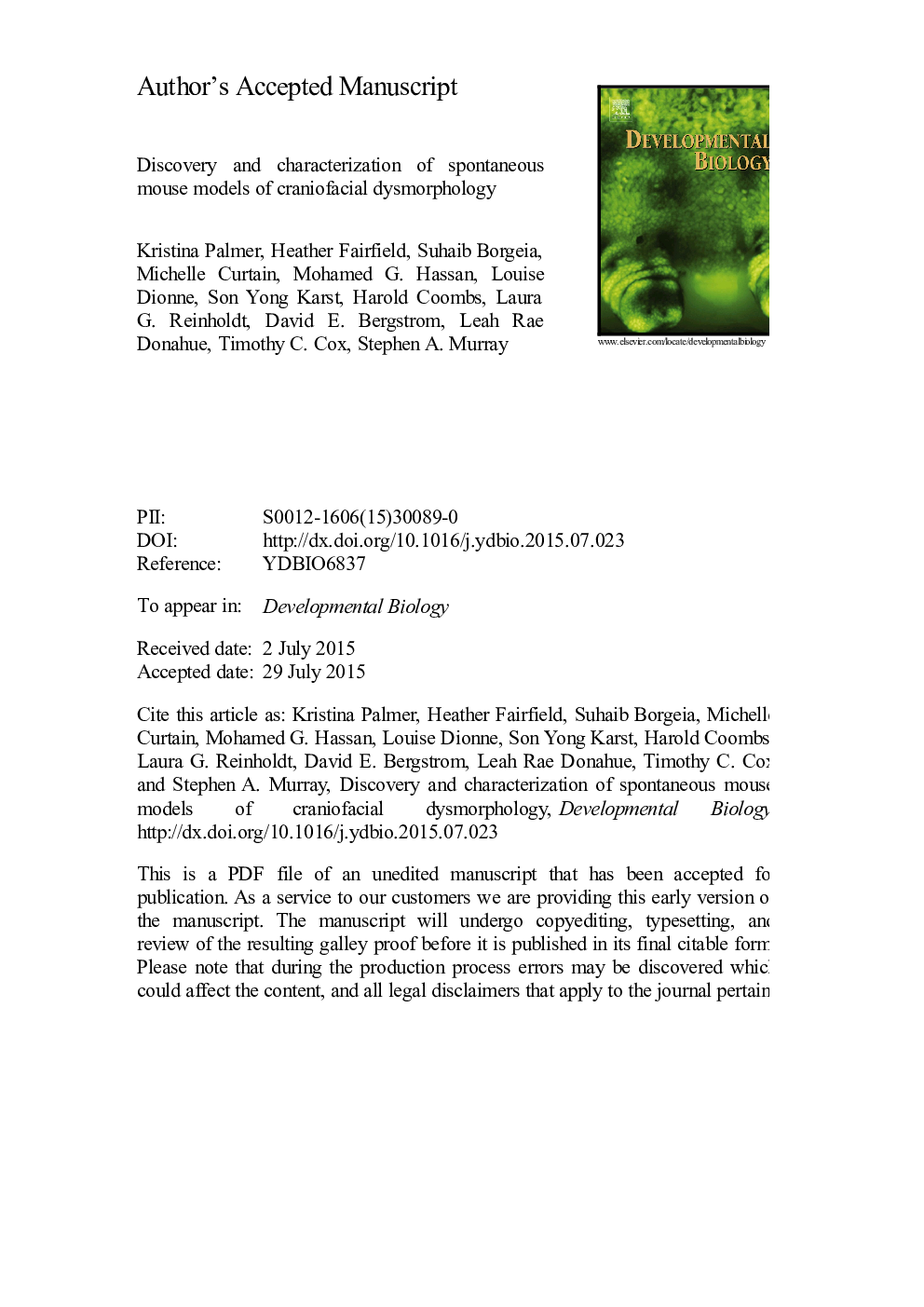| Article ID | Journal | Published Year | Pages | File Type |
|---|---|---|---|---|
| 10931107 | Developmental Biology | 2016 | 33 Pages |
Abstract
Craniofacial abnormalities are among the most common features of human genetic syndromes and disorders. The etiology of these conditions is often complex, influenced by both genetic context and the environment. Frequently, craniofacial abnormalities present as part of a syndrome with clear comorbid phenotypes, providing additional insight into mechanisms of the causative gene or pathway. The mouse has been a key tool in our understanding of the genetic mechanisms of craniofacial development and disease, and can provide excellent models for human craniofacial abnormalities. While powerful genetic engineering tools in the mouse have contributed significantly our understanding of craniofacial development and dysmorphology, forward genetic approaches provide an unbiased means to identify new genes and pathways. Moreover, spontaneous mutations can occur on any number of genetic backgrounds, potentially revealing critical genes that require a specific genetic context. Here we report discovery and phenotyping of 43 craniofacial mouse models, derived primarily from a screen for spontaneous mutations in production colonies at the Jackson Laboratory. We identify the causative gene for 33 lines, including novel genes in pathways not previously connected to craniofacial development, and novel alleles of known genes that present with unique phenotypes. Together with our detailed characterization, this work provides a valuable gene discovery resource for the craniofacial community, and a rich source of mouse models for further investigation.
Related Topics
Life Sciences
Biochemistry, Genetics and Molecular Biology
Cell Biology
Authors
Kristina Palmer, Heather Fairfield, Suhaib Borgeia, Michelle Curtain, Mohamed G. Hassan, Louise Dionne, Son Yong Karst, Harold Coombs, Roderick T Bronson, Laura G. Reinholdt, David E. Bergstrom, Leah Rae Donahue, Timothy C. Cox, Stephen A. Murray,
